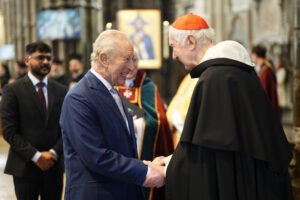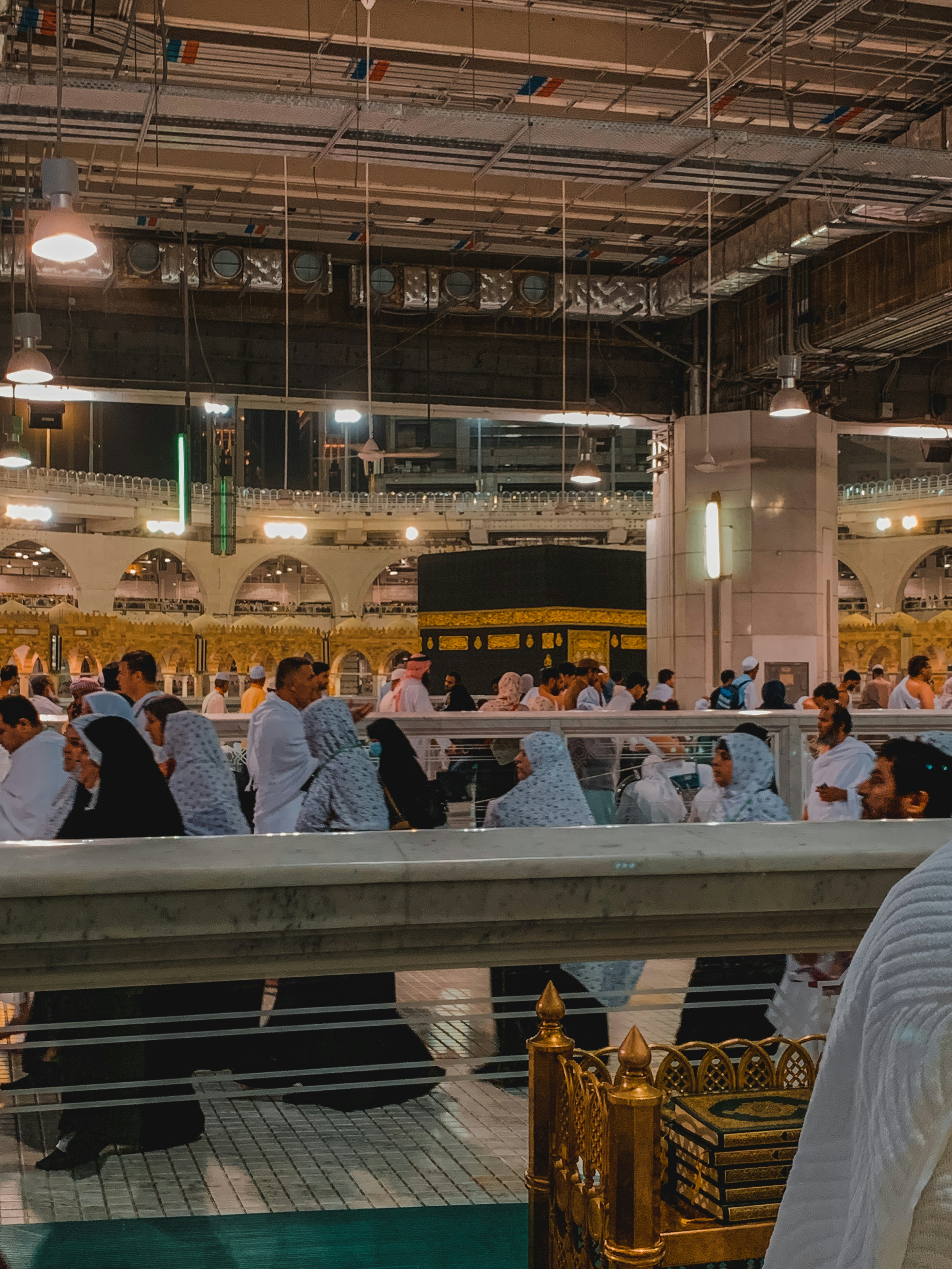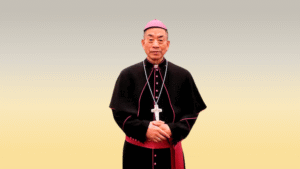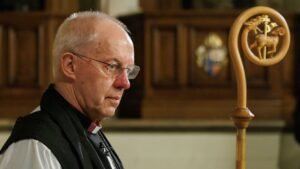The Rise of Young American Men in Russian Churches: A Journey Towards ‘Absurd Levels of Manliness’

Russian Orthodox Church Interior
https://youtu.be/W_PWgAAQUJI
The Allure of Manliness
In recent years, a noteworthy trend has emerged among young American men gravitating towards Russian Orthodox churches. This phenomenon, often characterized by an intense exploration of spirituality intertwined with a particular notion of masculinity, can be viewed as part of a broader cultural narrative. The appeal of ‘absurd levels of manliness’ resonates deeply within the context of contemporary society, where traditional ideals of masculinity are increasingly scrutinized and redefined.
The quest for meaning and identity appears to be a driving force behind this phenomenon. Within the walls of these churches, young men often find themselves drawn to a spiritual framework that emphasizes strength, discipline, and a sense of communal responsibility. The Russian Orthodox tradition, with its richly layered rituals and deep-rooted sense of history, provides a fertile ground for such explorations. Here, masculinity is not solely associated with physical prowess or dominance; rather, it encompasses virtues such as humility, sacrificial love, and moral integrity.
This shift in engagement highlights a broader societal movement among young men seeking purpose beyond conventional societal expectations. In an age where mental health and emotional well-being are gaining increasing attention, many are discovering that embracing a refined version of manliness—one that encompasses vulnerability and spiritual depth—can be profoundly rewarding. Furthermore, the strong sense of community found in these churches allows them to forge connections with others who share similar aspirations and values.
As discussions around masculinity evolve, the phenomenon of young American men aligning themselves with Russian Orthodox churches invites a reevaluation of what it means to be a man in today’s world. The complexities surrounding this journey towards ‘absurd levels of manliness’ merit further analysis, laying the foundation for a more nuanced understanding of gender, spirituality, and cultural identity.
Historical Context: Orthodox Christianity and Masculinity
The roots of Orthodox Christianity in Russia can be traced back to the conversion of Prince Vladimir of Kievan Rus’ in 988 AD, marking the inception of a faith that would shape the cultural and spiritual landscape of the region. Orthodox Christianity is characterized by its deep traditions, liturgical practices, and an emphasis on community and spirituality. Over centuries, the Orthodox Church has played a critical role in defining social norms, including expectations surrounding masculinity.
In the Orthodox Christian tradition, masculinity has been conceived through a lens that intertwines spiritual and physical dimensions. The teachings of the Church emphasize virtues such as strength, sacrifice, and moral integrity, which are seen as essential qualities of a man. These ideals resonate with narratives found in both the Old and New Testaments, where figures like David, Peter, and Paul exemplify a form of manliness that is both robust and spiritually aware. The church has historically viewed manhood as connected to leadership within the family and community, as well as a protector of faith.
Contrasting with Western perspectives, which have often associated masculinity with individualism and personal achievement, Orthodox views tend to stress communal responsibility and the importance of faith-based conduct. The teachings encourage men to embody Christ-like characteristics; strength should be balanced with humility, and authority should be exercised with a sense of service. This nuanced portrayal offers a template for young men within Russian communities today, guiding them towards a form of manliness that enhances their roles within both the church and society at large.
The evolving definition of masculinity in the context of Orthodox Christianity reflects broader cultural shifts while maintaining deep-rooted values. With the resurgence of interest in traditional values among young American men, this dialogue on masculinity finds relevance in contemporary discussions, suggesting a journey that seeks to reconcile these historical teachings with modern identity struggles.
The Appeal of Russian Churches: Elements of the ‘Manly’ Experience
The allure of Russian Orthodox churches for young American men is multifaceted, comprising a unique blend of community bonding, ritual practices, and teachings that resonate with notions of strength and duty. At the core of this attraction lies an environment that emphasizes moral fortitude and a call to spiritual and social responsibility. Traditional rituals, such as the divine liturgy and lasting observances like Lent and Pascha, serve not only as expressions of faith but also as moments of deep camaraderie among parishioners, fostering a sense of belonging often sought after in today’s disjointed society.
In contrast to many mainstream American religious experiences, which may prioritize individual expression or modern interpretation, Russian Orthodox worship presents a more structured and historical approach. This structured environment appeals to young men seeking discipline and a clear moral compass in their lives. The teachings often emphasize virtues such as strength, sacrifice, and perseverance, elements traditionally regarded as masculine traits. Furthermore, the spiritual teachings found within these services encourage adherents to embrace the hardships of life, presenting struggles as opportunities for personal growth and development.
This contrasting framework of community and ritual can be particularly resonant for those men who feel disillusioned by contemporary narratives of masculinity. It is within this space that they can explore their identities, reinforcing traditional values in an age where such perspectives can feel increasingly marginalized. The sense of historical continuity and a connection to a broader cultural narrative offers an appealing escape from a world that often prioritizes fleeting pursuits over lasting commitments. Ultimately, the unique combination of community, duty, and deeper spiritual engagement found in Russian Orthodox worship creates an environment conducive to what some describe as ‘absurd levels of manliness’, drawing more young men to these sacred spaces.
Cultural Shifts: The Modern Masculinity Crisis
In recent years, American society has experienced significant cultural shifts that have led to the emergence of what many perceive as a masculinity crisis. This crisis is characterized by the redefinition of masculinity and the evolving expectations surrounding male identity. Young men grapple with conflicting notions of masculinity in a world where traditional norms are increasingly scrutinized. As societal values shift, the roles that men are expected to play are also changing, often leaving them feeling marginalized and uncertain about their place within the broader social fabric.
Factors contributing to this crisis include the rise of feminism and the push for gender equality, which have necessitated a re-evaluation of gender roles. Young men are often faced with the challenge of reconciling their identity within a landscape that champions empowerment and independence for all genders. This struggle can create a sense of disconnection, resulting in feelings of inadequacy and a longing for a more defined role. Furthermore, societal expectations have transformed, leading to increased pressure on young men to embody traits such as emotional intelligence and vulnerability, which can be at odds with traditional notions of masculinity that emphasize stoicism and strength.
Consequently, young American men are increasingly seeking out spaces that honor traditional ideals of masculinity. For some, the search for a sense of identity has led them to embrace the structures found within Russian Orthodox churches. These institutions often emphasize traditional gender roles, community values, and a return to a more defined concept of manhood. As a result, young men find solace and support in environments that align with their desires to cultivate ‘absurd levels of manliness,’ creating a stark juxtaposition to the complexities presented by contemporary American culture.
Personal Stories: Young Men’s Journeys to Orthodox Faith
The journeys of young American men to the embrace of Russian Orthodoxy are as diverse as the individuals themselves, each story reflecting personal struggles, spiritual awakenings, and significant transformations. Many have recounted their experiences with feelings of dissatisfaction in their previous faith practices, often identifying a gap that Russian Orthodoxy successfully filled. John, a 24-year-old from California, shared how he initially navigated through various Christian denominations, searching for a deeper connection. After attending a Russian Orthodox service, he felt an unwavering sense of belonging, stating, “It was as if a hidden part of my soul was awakened.” This powerful moment signified not just a religious conversion, but a renewal of purpose in his life.
Similarly, Alex, who grew up in a culturally rich, multi-religious environment, recounted how the rituals and traditions of the Russian Orthodox Church captivated him. “The beauty of the liturgy and the profound sense of history drew me in,” he explained. His journey was not merely about faith; it became an exploration of his identity and a reclaiming of aspects of manliness he found alluring—tradition, strength, and community.
For others, transformation came from a place of crisis. Michael, a veteran, shared that following his service, he found himself struggling with anxiety and existential questions. Searching for answers, he stumbled upon a Russian Orthodox community and was introduced to the concept of sacrificial love. “This idea changed everything for me,” he reflected, highlighting how faith provided structure and guidance during turbulent times.
The recurring theme in these narratives is the idea of manliness redefined through their commitment to faith. It is as if these young men have discovered that true manliness blends strength with vulnerability, leadership with humility, and tradition with personal growth, making their journeys to the Russian Orthodox Church a profound testament to the human spirit’s resilience and longing for purpose.
Critiques and Controversies: The Notion of ‘Absurd Masculinity’
The emergent trend of ‘absurd levels of manliness’ among young American men in Russian churches has not been without its share of critiques and controversies. This notion of masculinity, characterized by hyper-masculine traits such as dominance, aggression, and stoicism, has raised significant concerns among various sociocultural analysts and faith-based groups. Critics argue that adhering to an extreme version of masculinity can lead to potentially harmful ideologies that prioritize aggression and competition over empathy and communal support.
One prevailing critique focuses on the psychological implications of promoting such a rigid form of masculinity. Experts contend that the pressures associated with ‘absurd masculinity’ can contribute to mental health issues among men who feel compelled to conform to these ideals. The unrealistic expectations of being emotionally unattached and perpetually strong may ultimately result in isolation and vulnerability. Such dynamics not only affect the men striving to meet these standards but can also have a ripple effect within their families and communities, leading to distorted relational paradigms.
The Role of Community: Brotherhood and Support Systems
The significance of community in shaping identities cannot be overstated, particularly for young men navigating their personal and spiritual journeys. Within the context of Russian Orthodox churches, these institutions play a pivotal role in creating support networks that foster a sense of belonging and purpose. The structure and values of these communities resonate deeply with the masculine identity, providing an avenue for personal growth and development.
At the core of the Russian Orthodox faith is the concept of brotherhood, which encourages fellowship among attendees. Young men find camaraderie through shared experiences and collective worship, reinforcing the idea that they are part of something larger than themselves. This sense of belonging is crucial, especially in a fast-paced society where isolation can be prevalent. Such support systems within the church offer an environment where young men can express their vulnerabilities while receiving encouragement from their peers, contributing to their overall emotional and spiritual well-being.
Furthermore, the communal activities organized by these churches—such as volunteer opportunities, retreats, and social gatherings—serve to strengthen the bonds among members. Through participating together, young men learn the values of teamwork and cooperation, essential traits for fostering deeper relationships. These shared experiences not only enhance their individual growth but also create a network of support that extends beyond the church’s walls.
The Russian Orthodox church’s emphasis on male leadership further appeals to the notion of manliness, as young men are afforded opportunities to take on roles that promote responsibility and service to the community. This often translates into mentorship initiatives, where older members guide and support younger ones, solidifying a generational bond that is vital for sustaining community cohesiveness. Ultimately, these dynamics within the Russian Orthodox churches provide young American men with the framework to embrace their identities, cultivate brotherhood, and evolve in an environment rich in support.
Comparisons: Russian Churches vs. Other Religious Institutions
The appeal of religious institutions in the United States often varies significantly across different faith communities, particularly concerning their approach to concepts like masculinity and strength. Among these diverse religious settings, Russian Orthodox churches have emerged as a distinctive environment that resonates with young American men. Unlike many other denominations that may prioritize egalitarianism and emotional expression, the Russian Orthodox tradition emphasizes a certain archetype of manliness that aligns with cultural values rooted in historical and spiritual contexts.
In Russian Orthodox churches, masculinity is often portrayed through the lens of spiritual leadership and moral fortitude. The community places a high value on men taking on roles of responsibility, both within the church and their families. This expectation coexists with the church’s rich traditions, including its elaborate rituals and ceremonial practices. Young men find themselves drawn to the sense of purpose and identity that these traditions promote, which may stand in stark contrast to the norms of other religious institutions that can sometimes appear less structured in their depiction of male roles.
Within other faith communities, the focus on masculinity may either be diminished in favor of inclusivity or approached from a perspective that emphasizes vulnerability and emotional expression. While valuable in their own right, these perspectives might not resonate as deeply with young men seeking clarity in their roles and expectations. The level of engagement witnessed in Russian Orthodox churches often stems from this clear articulation of masculinity, which many young men view as empowering rather than limiting.
This unique appeal likely contributes to the growing interest among young American men in Russian Orthodox faith, enabling them to embark on a journey that they perceive as one that cultivates strength, resilience, and an authentic connection to their cultural heritage. Such experiences stand in contrast to the broader American religious landscape, helping to illuminate the specific attraction of Russian churches for this demographic.
Conclusion: Reflections on Faith, Masculinity, and Future Trends
The emergence of a significant number of young American men gravitating towards Russian churches raises important questions about the intersections of faith and masculinity. As discussions surrounding masculinity have evolved, these young men appear to be drawn to communities that promote traditional values, often perceived as ‘absurd levels of manliness’. This trend signifies not merely a shift in spiritual affiliations but also reflects deeper yearnings for identity, purpose, and community in an increasingly fragmented society.
The implications of this movement are manifold. Young men are seeking meaning and fulfillment in settings that promise a structured framework of beliefs amidst a backdrop of rapidly changing cultural norms. In these Russian churches, they often find a supportive environment that reinforces ideals of strength, responsibility, and moral clarity—qualities that many perceive as being under threat in contemporary society. This search for a robust masculine identity may well redefine traditional networks of faith, encouraging the growth of communities centered around these tenets.
Moving forward, it is crucial to consider how these religious movements will adapt to the broader cultural landscape. As society continues to grapple with themes of masculinity and faith, one potential direction could involve a more nuanced approach that integrates the diverse experiences of young men. This may lead to a more inclusive dialogue within these communities, bridging gaps between modern challenges and traditional teachings. Moreover, the engagement of young men in church activities could encourage their deeper involvement in social justice issues, contributing to a more holistic conception of manhood that combines faith with proactive societal engagement.
Ultimately, as young American men navigate their paths through faith and masculinity, the interplay between traditional beliefs and contemporary relevance will shape not only the future of these religious movements but also the broader understanding of what it means to be a man in today’s world.











